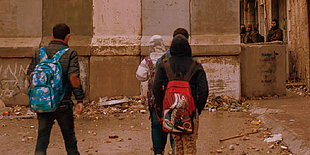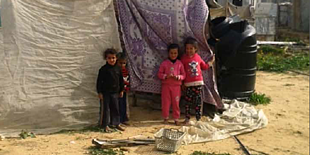The forced displacement and dispossession of Palestinians across the oPt takes place in the context of Israel’s prolonged occupation and lack of respect for international law, compounded by recurrent rounds of hostilities in the Gaza Strip. Although no major displacement occurred in Gaza in 2015, internally displaced persons there continue to suffer from the devastating consequences of the 2014 hostilities between Israel and Palestinian armed groups, including Hamas, with an estimated 90,000 people still displaced during the second half of 2015. Israeli policies and practices in certain parts of the West Bank, particularly in Area C and East Jerusalem, have contributed to the creation of a coercive environment that undermines a Palestinian physical presence and exacerbates the risk of individual and mass forcible transfers. The planning system applied in Area C favours Israeli settlement interests over the needs of the protected population and makes it almost impossible for Palestinians to obtain building permits: between 2010 and 2014, Palestinians submitted 2,020 applications for building permits in Area C, of which 33 were approved. A similarly restrictive planning regime in East Jerusalem has resulted in only 13 per cent of the municipal area zoned for Palestinian construction, most of which is already built up.
Fragmented Lives: Humanitarian Overview 2015

Foreword
Settlements: a key driver of humanitarian vulnerability
The way forward
In this document
In 2015, Palestinian civilians across the oPt continued to be subjected to threats to their lives, physical safety and liberty from conflict-related violence, and from policies and practices related to the Israeli occupation, including settler violence. While most of the year witnessed a relative calm compared to 2014, tension rose in September in East Jerusalem, with protests, clashes and violence spreading to the remaining oPt, including to the Access Restricted Areas in Gaza, and Israel in October. Due to the upsurge in violence in the last quarter, 2015 recorded the highest number of casualties among West Bank Palestinians since 2005. Israeli casualties in the West Bank and Israel, among both Israeli forces and civilians, were also the highest since 2005. In Gaza, the August 2014 ceasefire has largely held, as reflected in the relatively low number of fatalities, although casualties also rose in the final quarter of the year, along with the escalation in the West Bank.
Israeli settlements, which have been established and expanded in the occupied West Bank, including East Jerusalem, in contravention of international law, underlie many of the concerns highlighted in "Fragmented Lives 2015" and generate the need for assistance and protection measures by humanitarian actors.
Israel restricts Palestinian movement within the oPt, including between the Gaza Strip and West Bank, through a combination of physical obstacles, bureaucratic constraints, and the designation of areas as restricted or closed. Combined, these restrictions impede access to services and resources, disrupt family and social life and undermine Palestinians’ enjoyment of their economic, social and cultural rights, undermine livelihoods and compound the fragmentation of the oPt.
In 2015, the major drivers of humanitarian vulnerability in the oPt remained unchanged and were directly linked to Israel’s protracted occupation, now approaching its 50th year. The situation continued to be characterized by violations of international humanitarian law by all parties, the systematic denial of Palestinian rights and continuing conflict, punctuated by frequent outbreaks of violence.
This section of "Fragmented Lives 2015" details the main steps required on the part of the Israeli authorities, Palestinian authorities and armed groups, to rectify policies and practices inconsistent with international law, protect the rights of Palestinians living under occupation and reduce humanitarian vulnerability.
In 2015, humanitarian organizations continued to face a range of obstacles from the Israeli authorities regarding the access of personnel, especially national employees, and the materials needed for humanitarian projects. These include physical and administrative restrictions on the access and movement of humanitarian actors; restrictions on the delivery of materials needed for humanitarian projects; and limitations on the implementation of projects that involve building, expanding or rehabilitating infrastructure in the Gaza Strip and Area C of the West Bank. Such obstacles have hampered the ability of humanitarian organizations to provide assistance and protection to Palestinians throughout the oPt. Humanitarian operations in Gaza were also impeded by restrictions imposed by, and the prohibition on contact with the Hamas authorities, in addition to the prolonged closure of the Rafah crossing with Egypt.



















